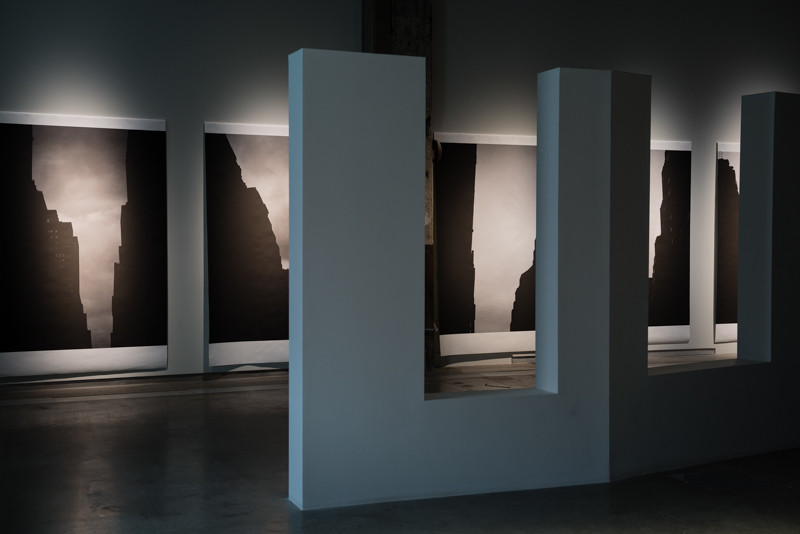
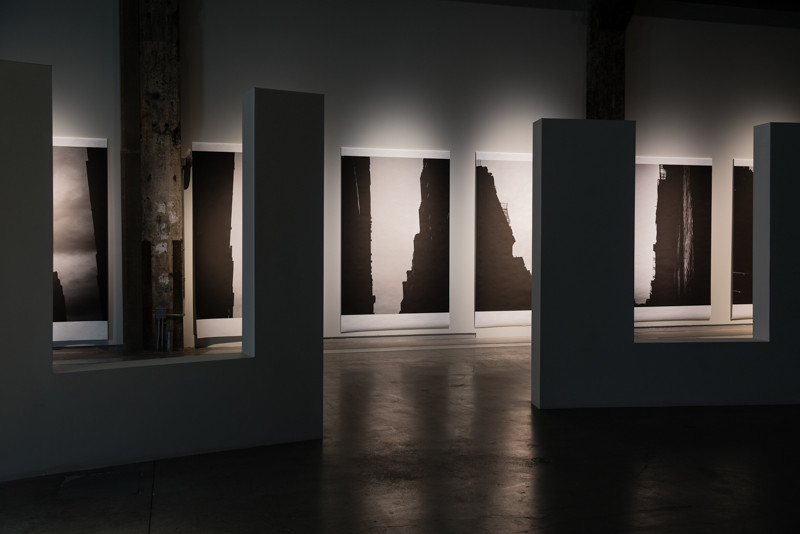
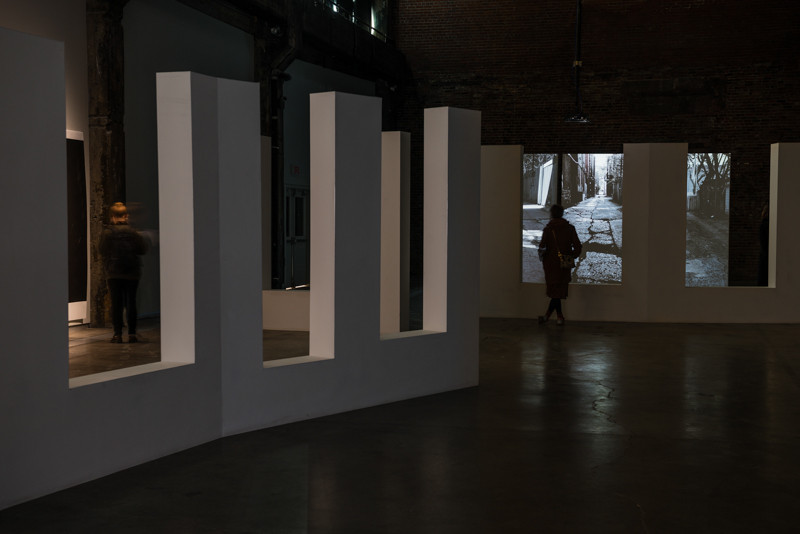
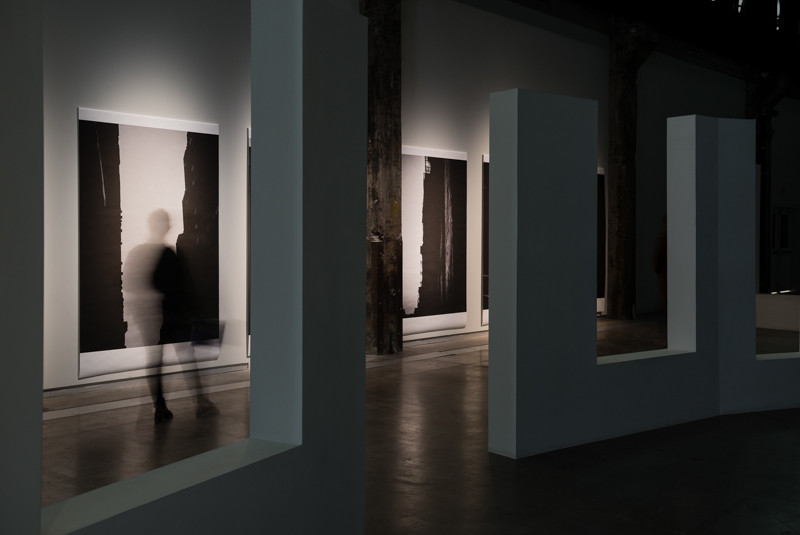
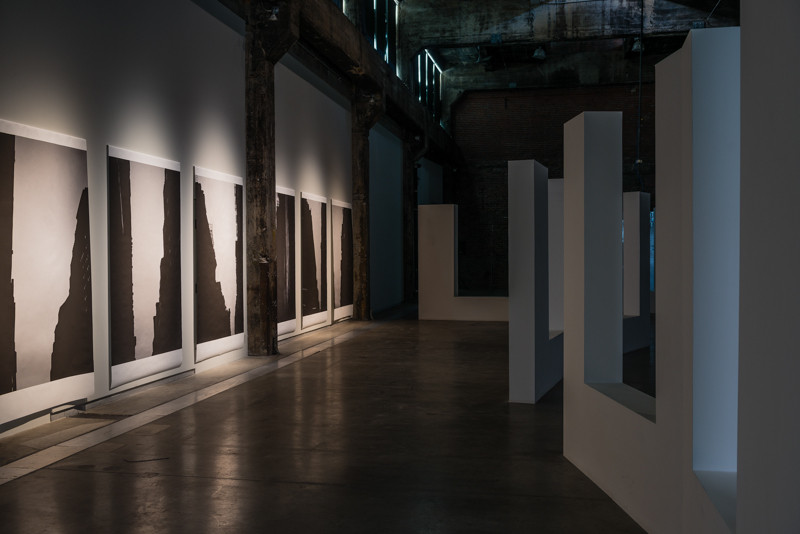
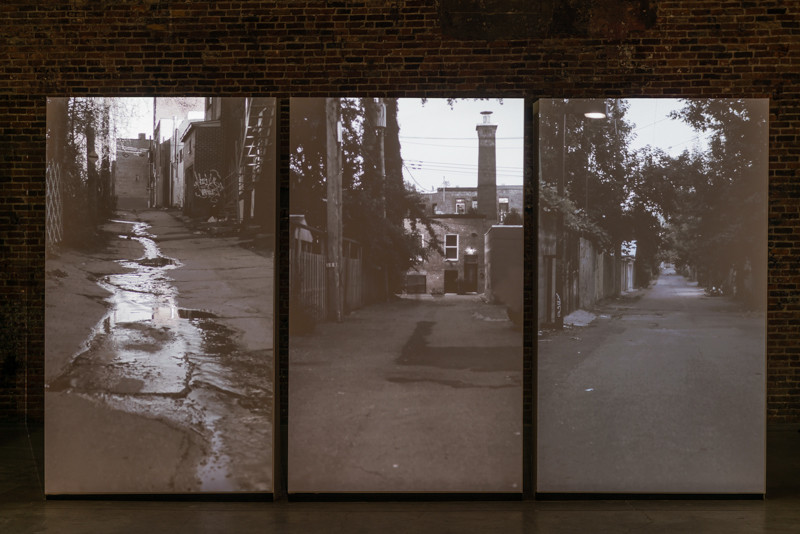
In all likelihood, all of us have once seen this image of the moon, white on black, in which it appears to us engulfed in shadow, seemingly gnawed halfway by the latter. While the dark side appears to be slowly receding into stark nothingness, the bright part displays its relief — all the more sharply as we also have to face the dissolution of all matter in the other part. It looks like a kind of sculpture, threatened by a possibly still active nothingness, which is growing. In this image, sculptural form and clear image are together given birth. In fact, they owe this twin birth to the shadow out of which they both come, the image having gotten all the clearer for seeming to crawl out of nothing, the sculpture having shapes that are all the more sensual for arising out of the same vacuum.
Shadow here would be a mother to both photography and sculpture; through it, ties are formed that bind those two mediums to one another.
In previous texts, the allotopic character of sculpture’s relationship to photography has been underlined. As though photography and sculpture could only cohabitate through a kind of active resistance between one medium and the other. This is such an integral part of Jocelyne Alloucherie’s work that it becomes a kind of play. Actually, the frame, the grain, inhabitable shapes, shaded profiles, posts, sights are all components of Jocelyne Alloucherie’s works that end up migrating beyond the medium of which they remain a constituent part. They come to have a life of their own, beyond sculpture, beyond photography, but still steeped in what these two mediums offer as conditions of possibility.
And yet, this play of exchanges finds its limit in an essential component of the artist’s images and masses: shadow. Already in 2003[1], it seemed to me that light needs the obstacle of a voluminous object to create an image, and that this essential shadow is all the more necessary for sculpture, whose forms could not be revealed without this caress of light that fashions it. It is on this signifying ground of shadow that sculpture and photograph come to meet.
Dédale represents one more step in this direction. All the more so as Jocelyne Alloucherie is trying her hand at a medium that is new for her: video. It is to the alleyway that she devotes her full attention. She continues there the work she began with tree cut-outs, then urban constructions she exploited before (Les Occidents, 2005). Alleyways, lanes, callejones form the backbone of our cities’ architectural constructions. They are the backgrounds, the back-yards, the foundations of our urban organization. It is by way of these that certain services that are essential to life can be provided to the citizens. At this level, they have however become more or less obsolete. They are no longer used for garbage collection and electric wires hardly hang there anymore. But they have remained as a relic of architectural and urban organization. In some cities, and I am thinking of Guanajuato, Mexico, they are used more because they are faster and more practical than the streets (calles in Spanish) reserved for cars.
At the formal level, they offer a digest of the masses and forms that Jocelyne Alloucherie has been combining throughout her career[2]. Aside from this, she has worked with tones, shadows, the soundtrack, seeking an aesthetic effect that denaturalizes an actual alleyway, without however betraying it. In so doing, she seeks to show to what extent we inhabit forms that are not just garrets, teeming with life… though they are that, too.
In the shimmering, slanting, almost drooping light of the end of the day, beings go to and fro, animals move about. They all share a liking for these kinds of back alleys that no longer really serve any purpose and which we still enjoy striding along, meanderingly laid out amidst our dwellings, as though striving to keep up appearances from their hidden side.
Sylvain Campeau
[1] I am referring here to page 9 of my text in : Jocelyne Alloucherie. Glissements, Valcourt, Centre Yvonne L. Bombardier, 2003
[2] It should also be noted that the French word for “alleyway”: “ruelle”, comes from the Old French “ruiele”, referring to a passage between the wall and the bed. The artist’s toolkit of references is known for including domestic furniture (La septième chambre, 1986-87; Table haute, 1979-90).
Jocelyne Alloucherie
Since 1973, Jocelyne Alloucherie's work has been presented in several solo and group exhibitions in Quebec, Canada and abroad. Her recent research with scannophotography, spanning several series, was featured in a recent exhibition at the Carleton University Art Gallery, in Ottawa, curated by Diana Nemiroff. These installations, in adapted versions, will also be on show at the CRAA, in Verbania Italy, in a solo exhibition held from July to October 2011. The various works from the corpus Climats (Land of blood, Land of snow, Land of sand) were produced by combining different techniques: silver based photography, ephemeral drawing and scannophotography. Born in Québec city, the artist lives and works in Montreal. She is represented by Françoise Paviot in Paris, Roger Bellemare in Montreal and 511 Gallery in New York.
Curator
Sylvain Campeau
